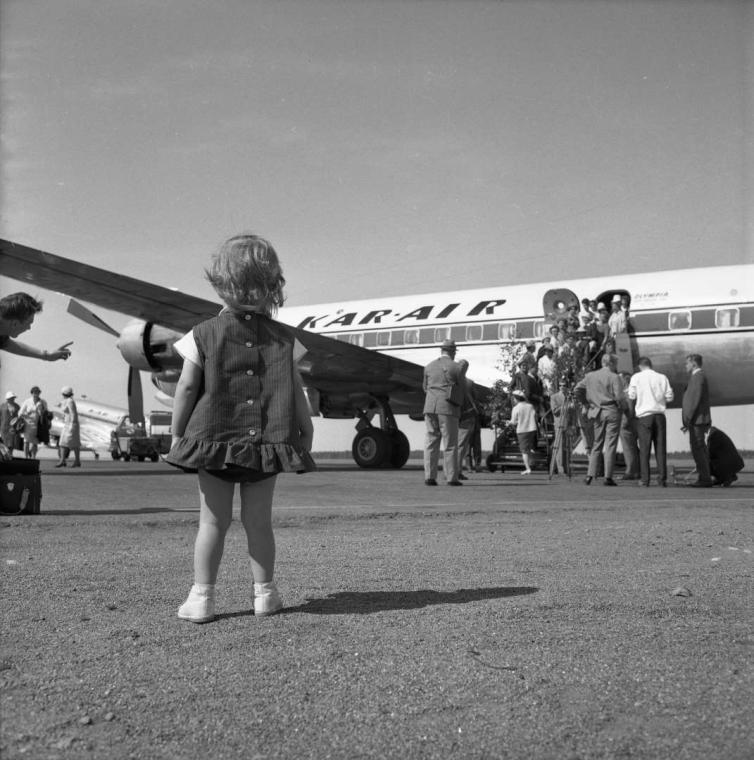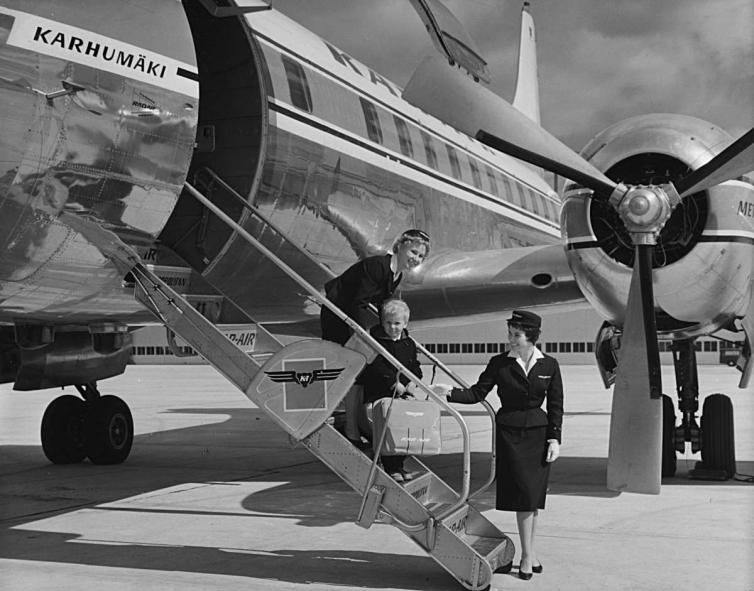For over a hundred years, air traffic has enabled Finns to keep up with a changing world, cultivate foreign trade and establish international relations. We will also need functional and diverse air traffic in the future. It is essential for Finland to be part of the global air route network.
Image: Aviation Museum
Image: Aviation Museum
1922: The early history of the company in owning and administering airports reaches back to the year 1922 when air traffic administration was moved to the Ministry of Transport and Public Works (which later became the Ministry of Transport and Communications). The ministry took on the responsibilities of an aviation authority and developing air traffic and airports.
1972: After many different stages, the aviation department of the Ministry of Transport and Communications and the airport department of the Roads and Waterways Administration were merged and became the National Board of Aviation on 1 March 1972. It took on the administration of twenty airports, of which sixteen had regular traffic and four joint-use airports had permanent Air Commands of the Finnish Air Force.
1991: With the international trend of privatisation, Finland too wanted to separate aviation authority funds from the government budget. The National Board of Aviation became a commercial enterprise in 1991. For the new Civil Aviation Administration, this meant financial independence and a possibility to develop the business and airport services. Official responsibilities were vested in an independent Flight Safety Authority.
2006: The Civil Aviation Administration changed its name to Finavia. At the same time, the Flight Safety Authority was moved to the Finnish Civil Aviation Authority, a completely separate government agency. Finavia’s role as a business enterprise was further emphasised. It administered the infrastructure and air navigation services of over 25 airports.
2010: Finavia Corporation was founded on 1 January 2010 when the Civil Aviation Administration operations were transferred completely to the government-owned company.
2017: The air navigation and air traffic control services were separated to a new company, ANS Finland, on 1 April 2017.
History of the airport network
1918: Utti and Lappeenranta
1929: Kauhava
1935: Turku (Artukainen), 1. airport for civil aviation until 1955
1936: Joroinen (later Varkaus) and Helsinki-Malmi
1937: Tampere (Härmälä) untill 1979 and Mariehamn
1938: Vaasa
1939: Kemi (later Kemi-Tornio), Luonetjärvi (later Jyväskylä), Pori, Halli
1940: Rovaniemi and Kuopio
1941: Joensuu
1943: Ivalo
1952: Helsinki
1953: Oulu
1955: Turku (Rusko)
1957: Kajaani
1960: Kruunuby (later Kokkola-Pietarsaari)
1972: Kuusamo
1974: Savonlinna
1975: Kittilä
1979: Tampere-Pirkkala
1980: Enontekiö
2015: The ownership of Kauhava Airport to Kasvuyrittäjät Oy
2016: The ownership of Lappeenranta Airport to city of Lappeenranta. Varkaus Airport to an unsupervised airport.
2017: The ownership of Helsinki-Malmi Airport to city of Helsinki
2021: The ownership of Enontekiö Airport to Enontekiö municipality

